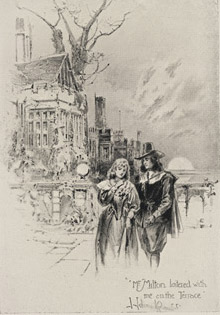The Wedded State
In 1639 Milton returned to England, just as the conflicts between Crown, Church and Parliament were reaching their crises. Milton’s pamphlets of the 1640s all concerned liberty, which he divided into three kinds, religious, domestic and political. His first tracts addressed Church government, but he then turned to domestic liberty and the question of divorce. His early biographer John Toland suggested the reason: Milton’s wife, Mary Powell, had deserted him after a month of marriage in 1642, and he now sought to ‘justify by proper Arguments the firm Resolution he had taken of never receiving his Wife back’.
Milton ’s writings on divorce had little influence in their own time (in a sonnet he rhymed ‘Tetrachordon’ with ‘seldom por’d on’), but they have irrevocably shaped his popular reputation. George Saintsbury called speculation on Milton’s life ‘irritating to the critically minded and dangerously misleading to the uncritical’, but novelists and playwrights are happily unconstrained by the bounds of established fact.
 |
The doctrine & discipline of divorce: restor’d to the good of both sexes (London, 1644). Bb*.11.10(E)6 |
 |
Tetrachordon ( London, 1645). Bb*.10.14 (E)4 |
 |
Mr. Milton loitered with me on the terrace, an illustration by John Jellicoe and Herbert Railton from an 1898 edition of Anne Manning’s The maiden & married life of Mary Powell. Misc.7.89.1665 |
|



